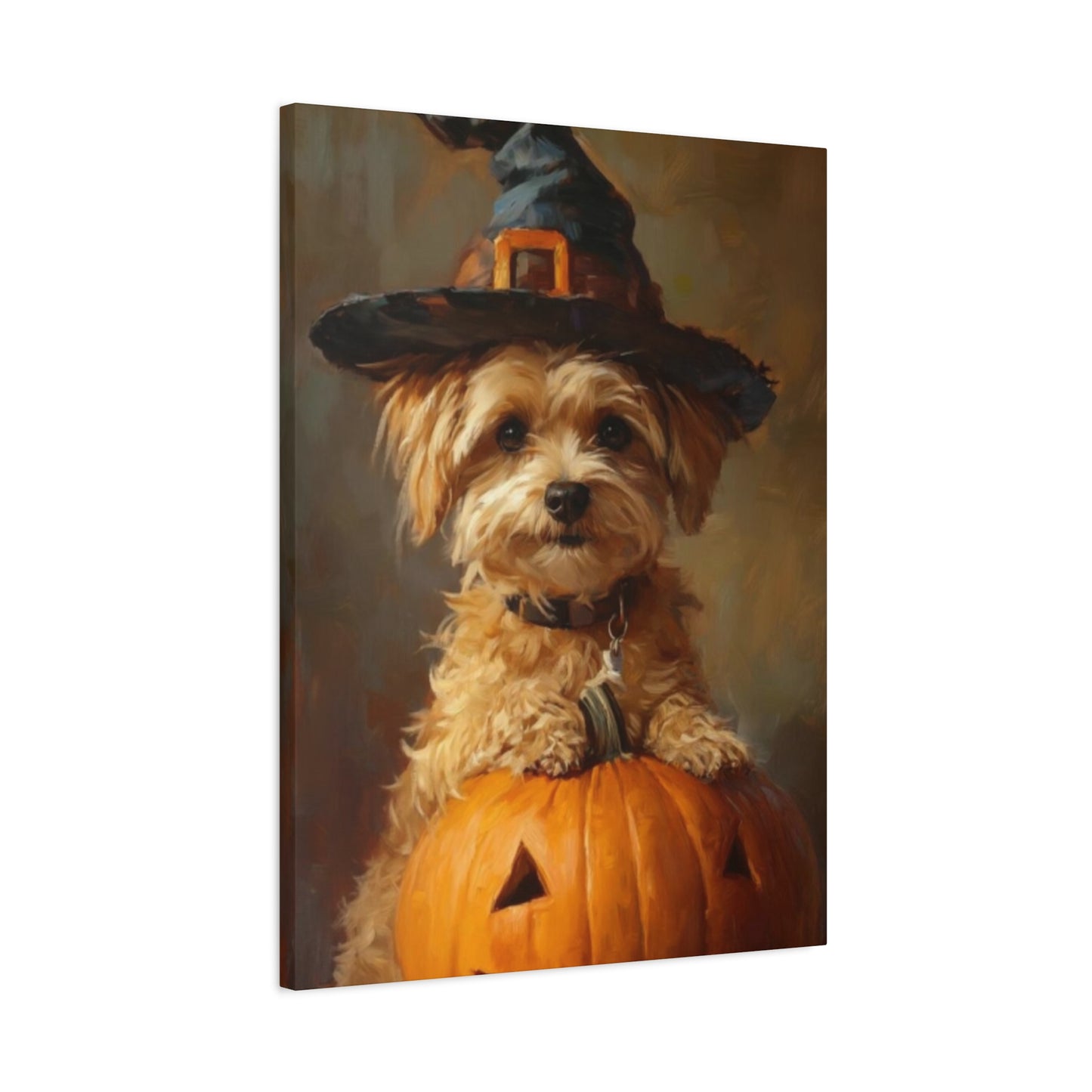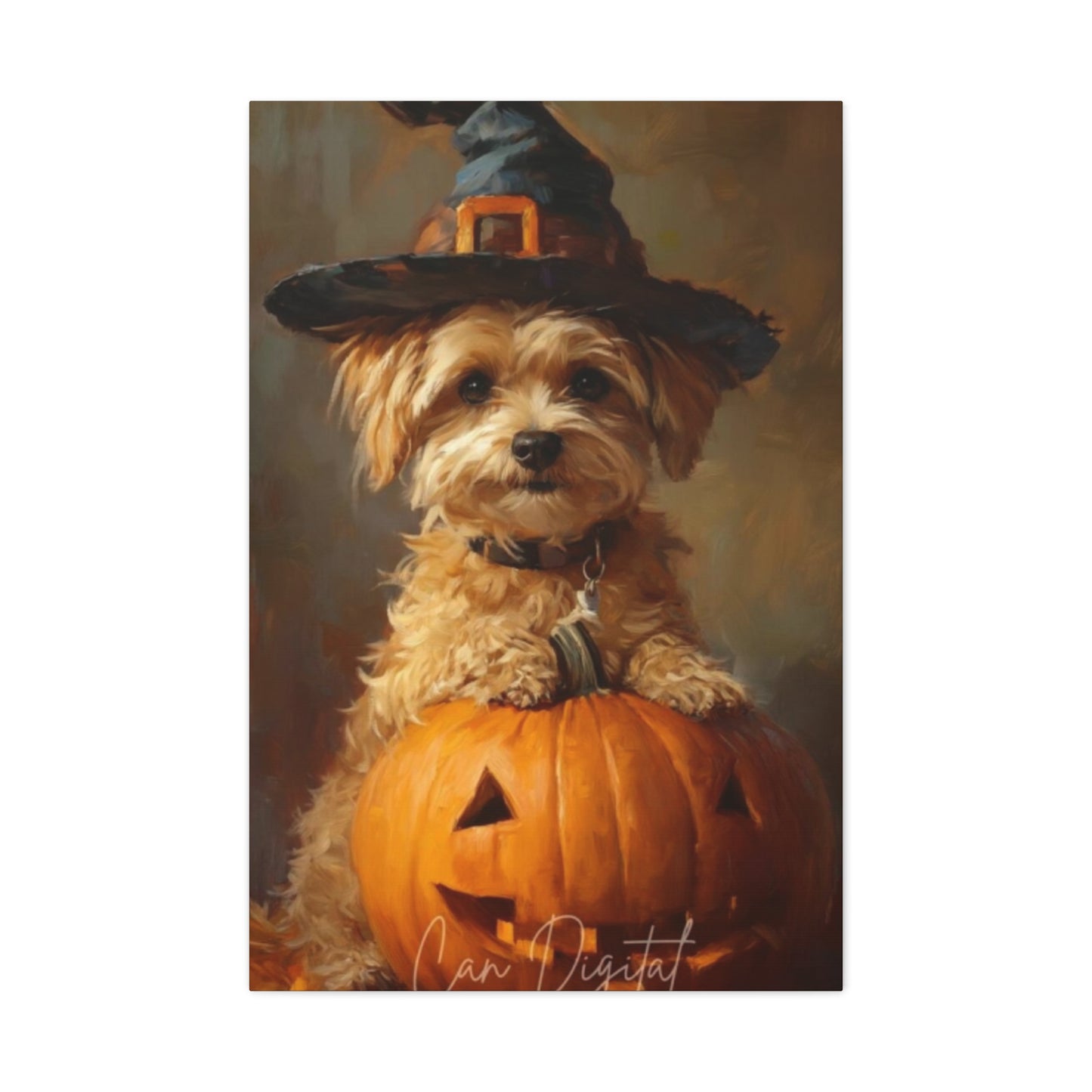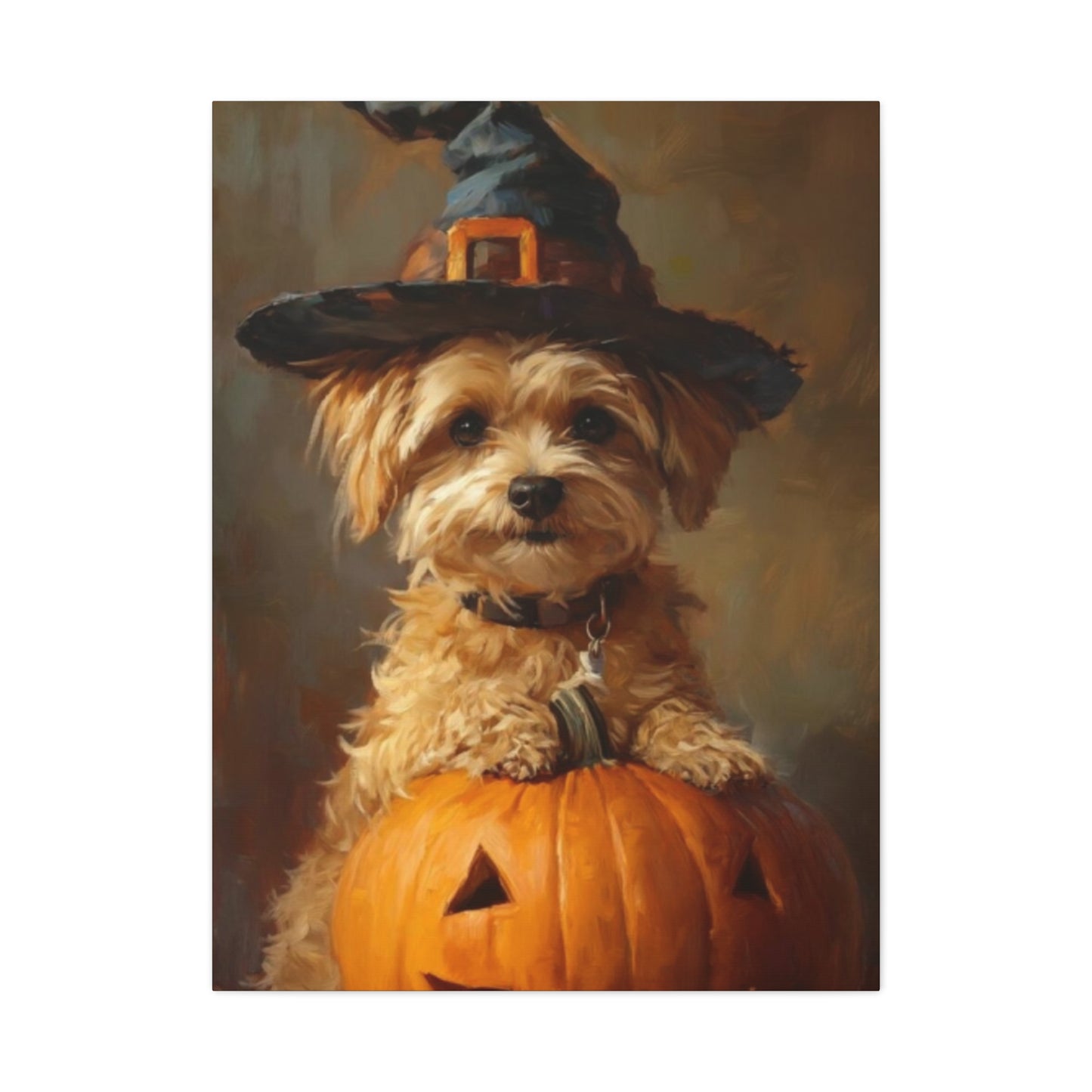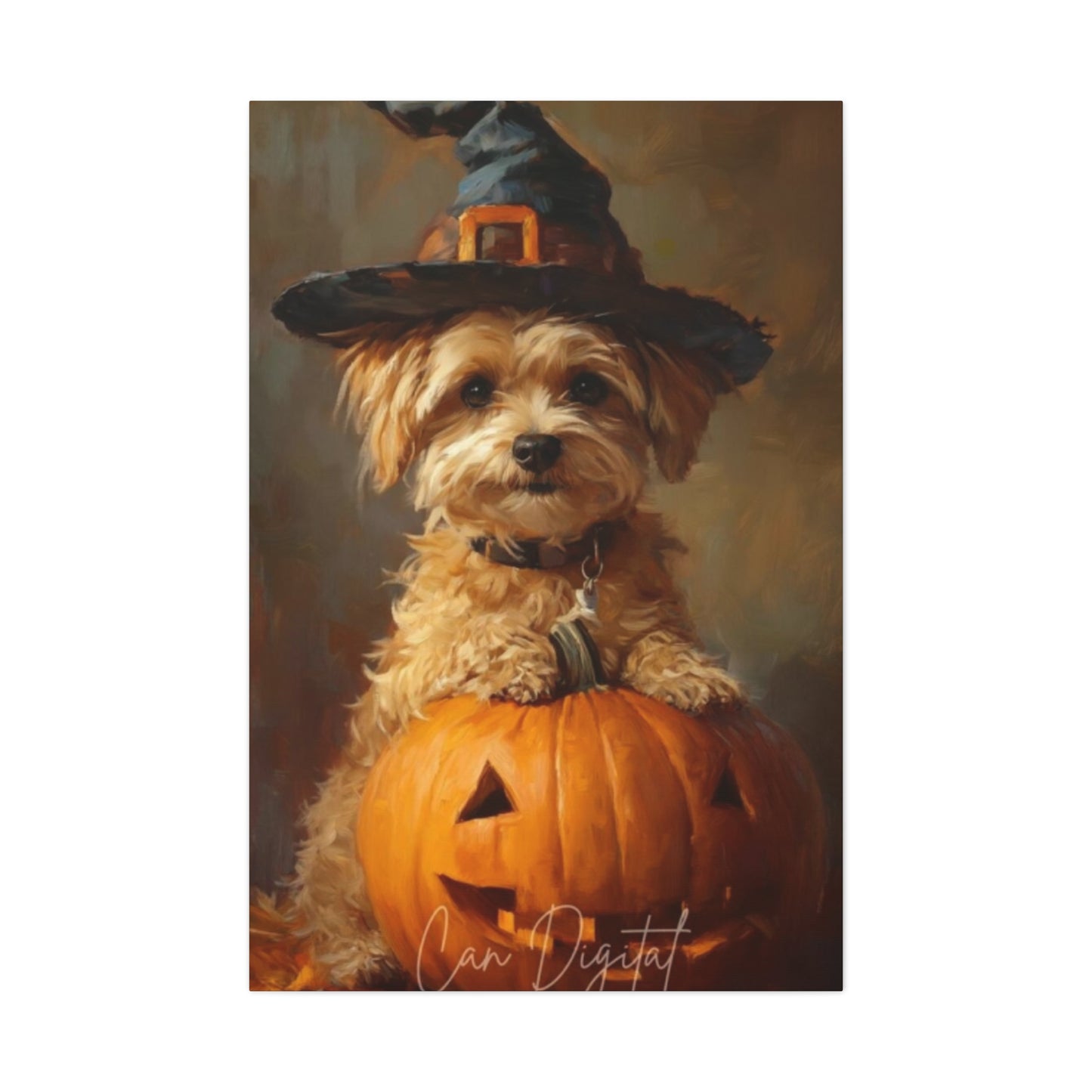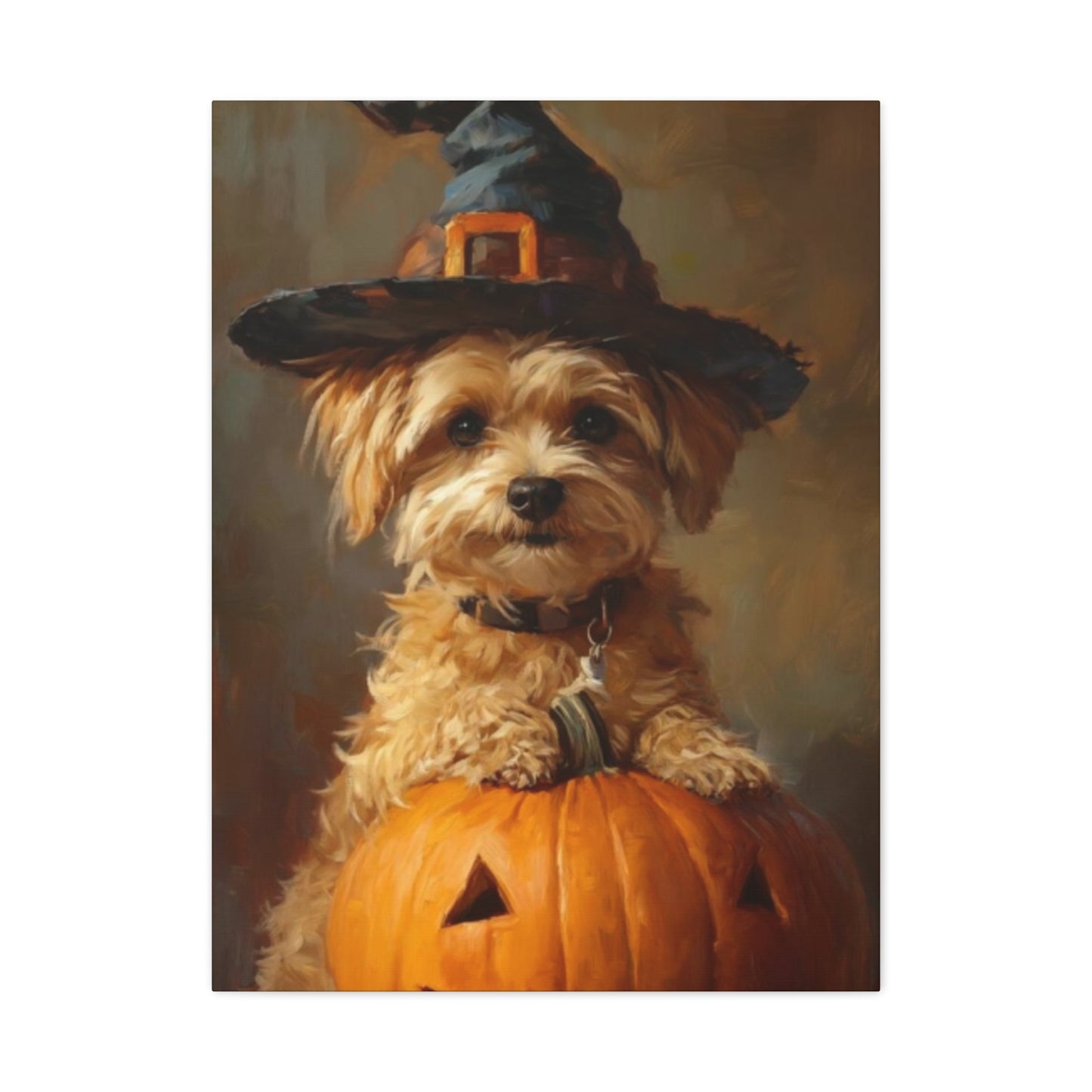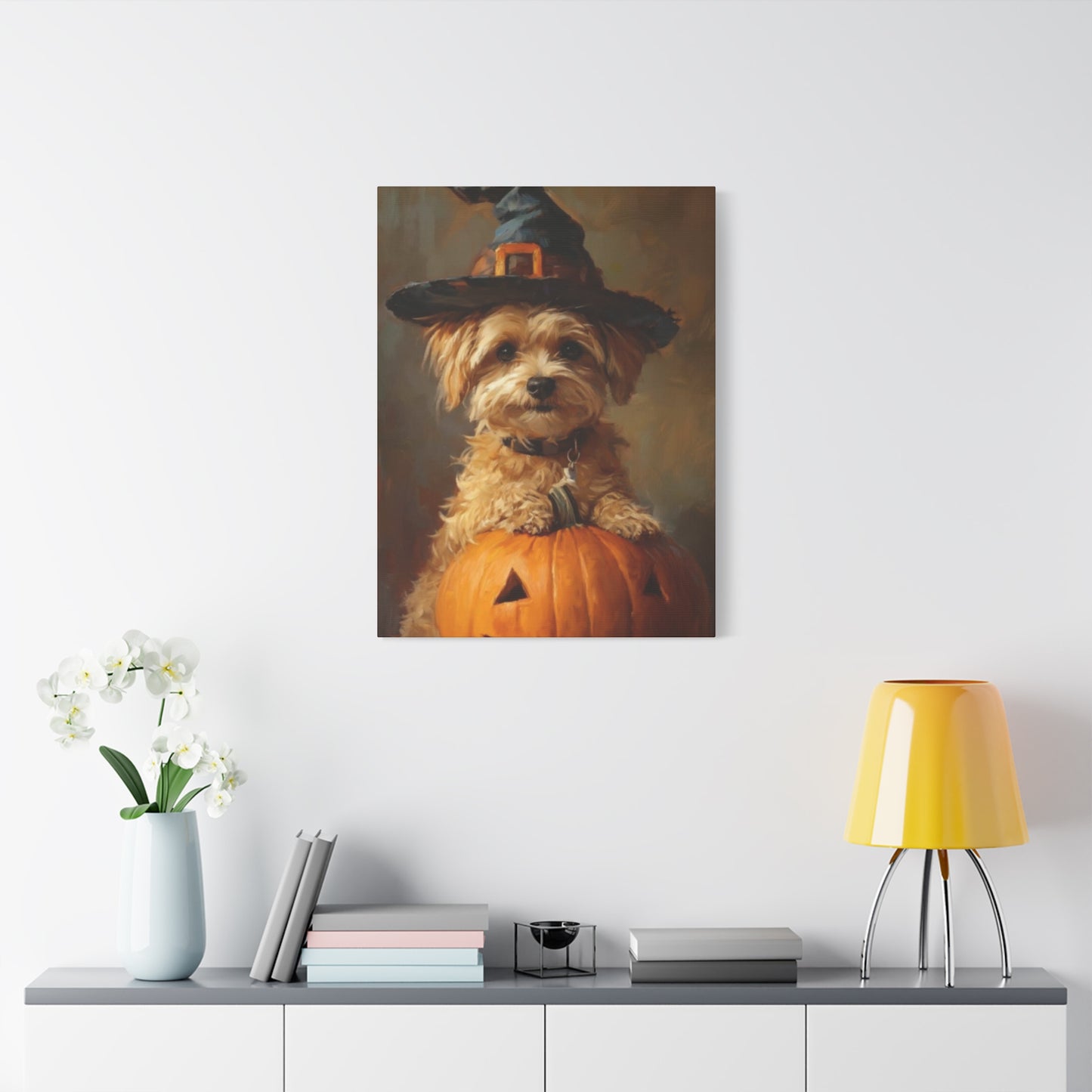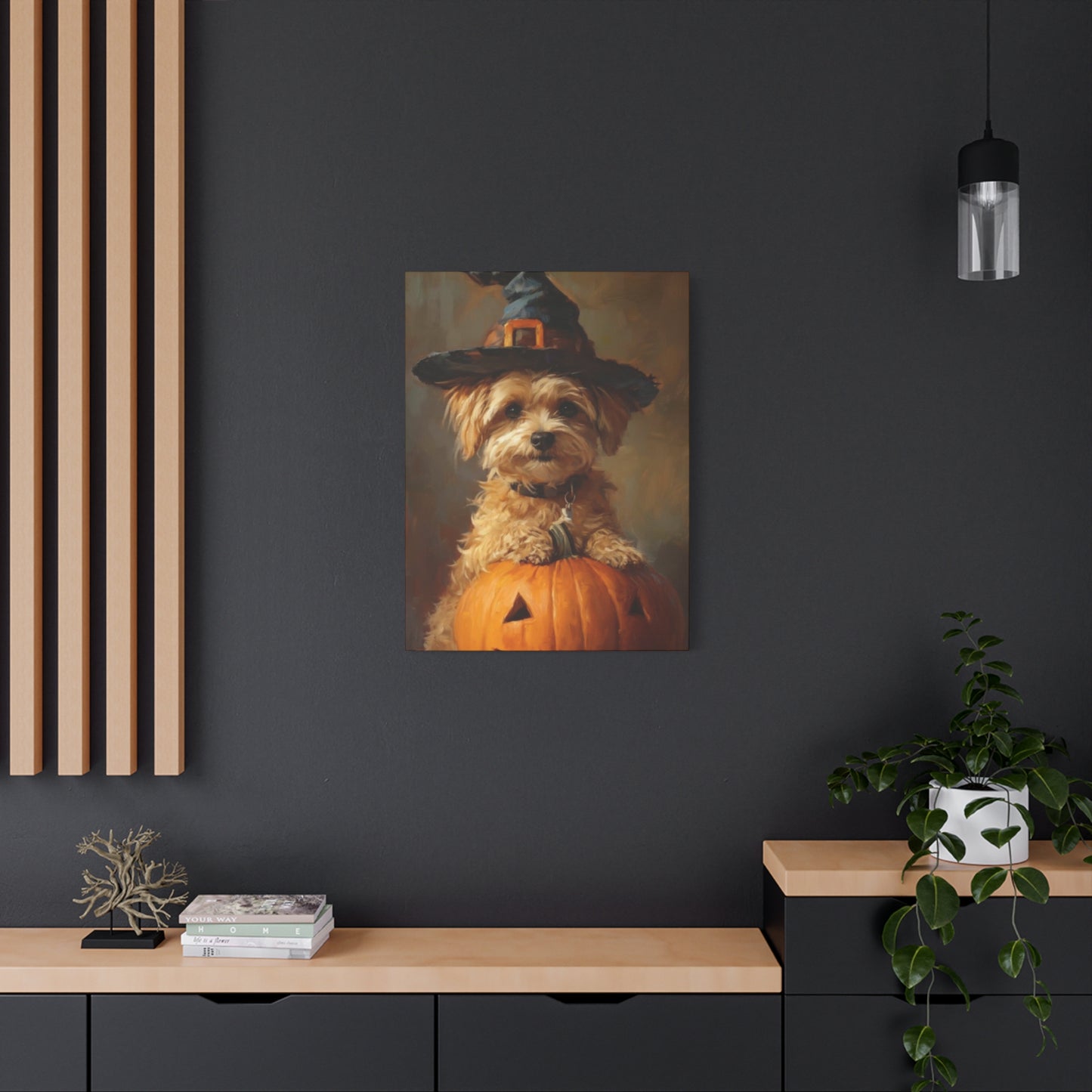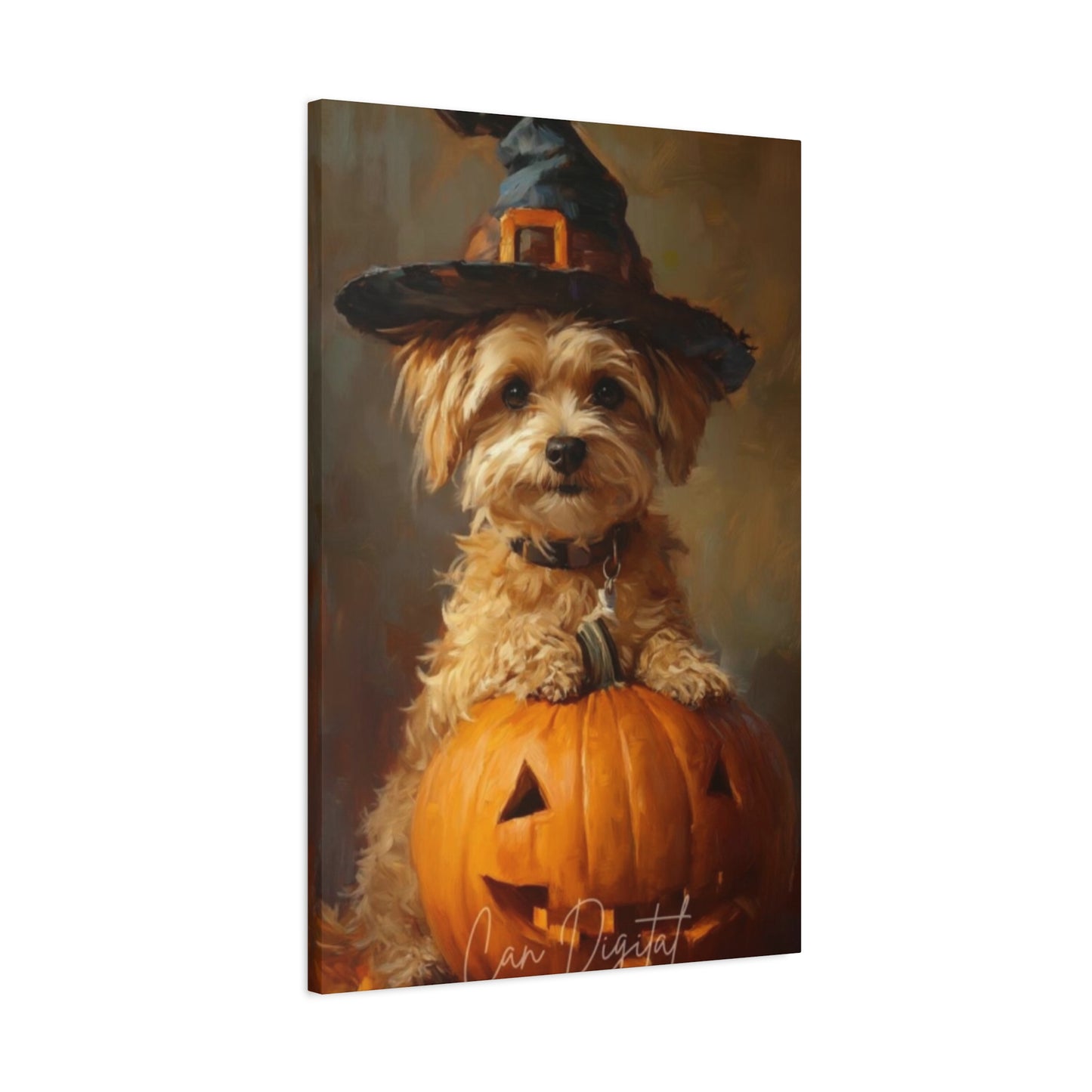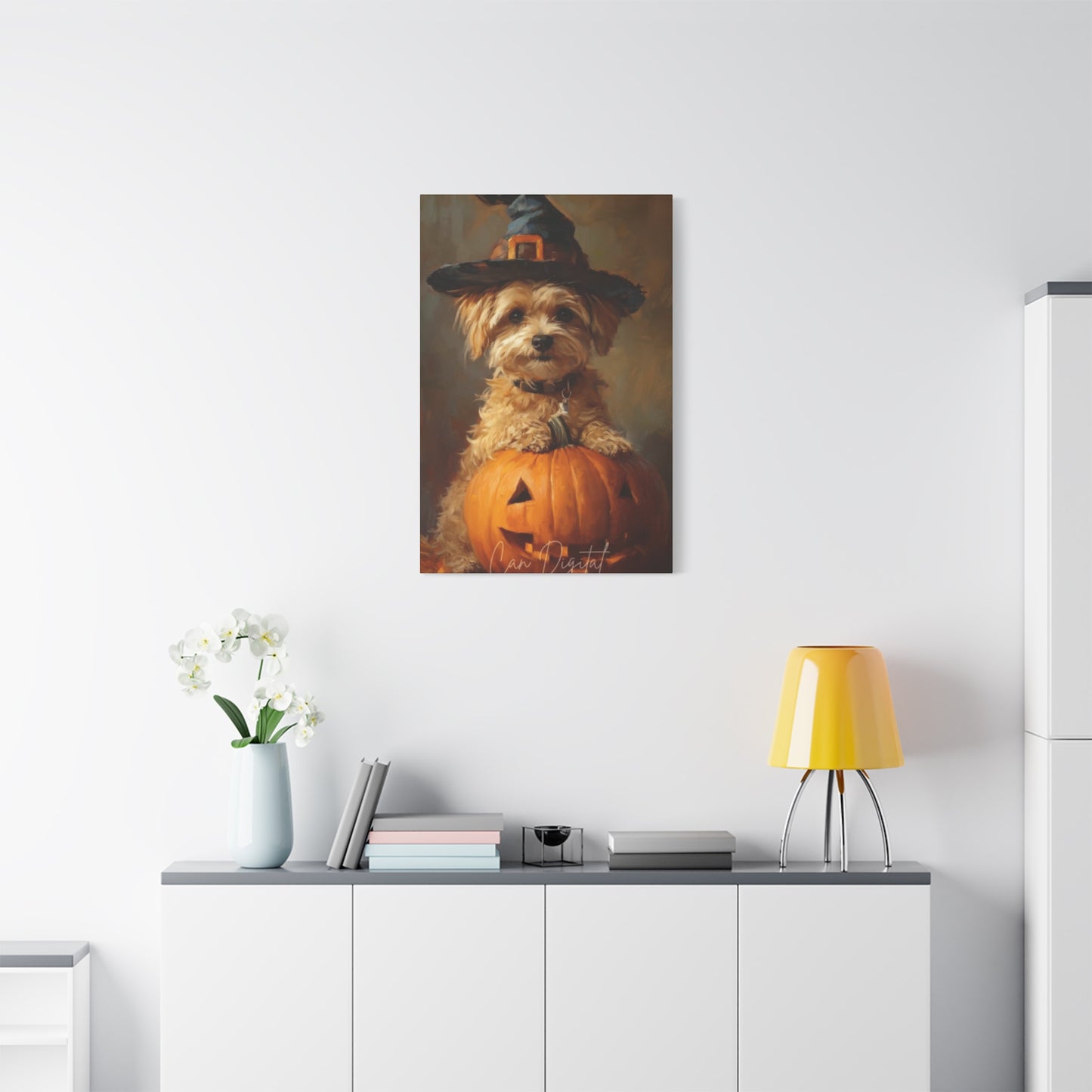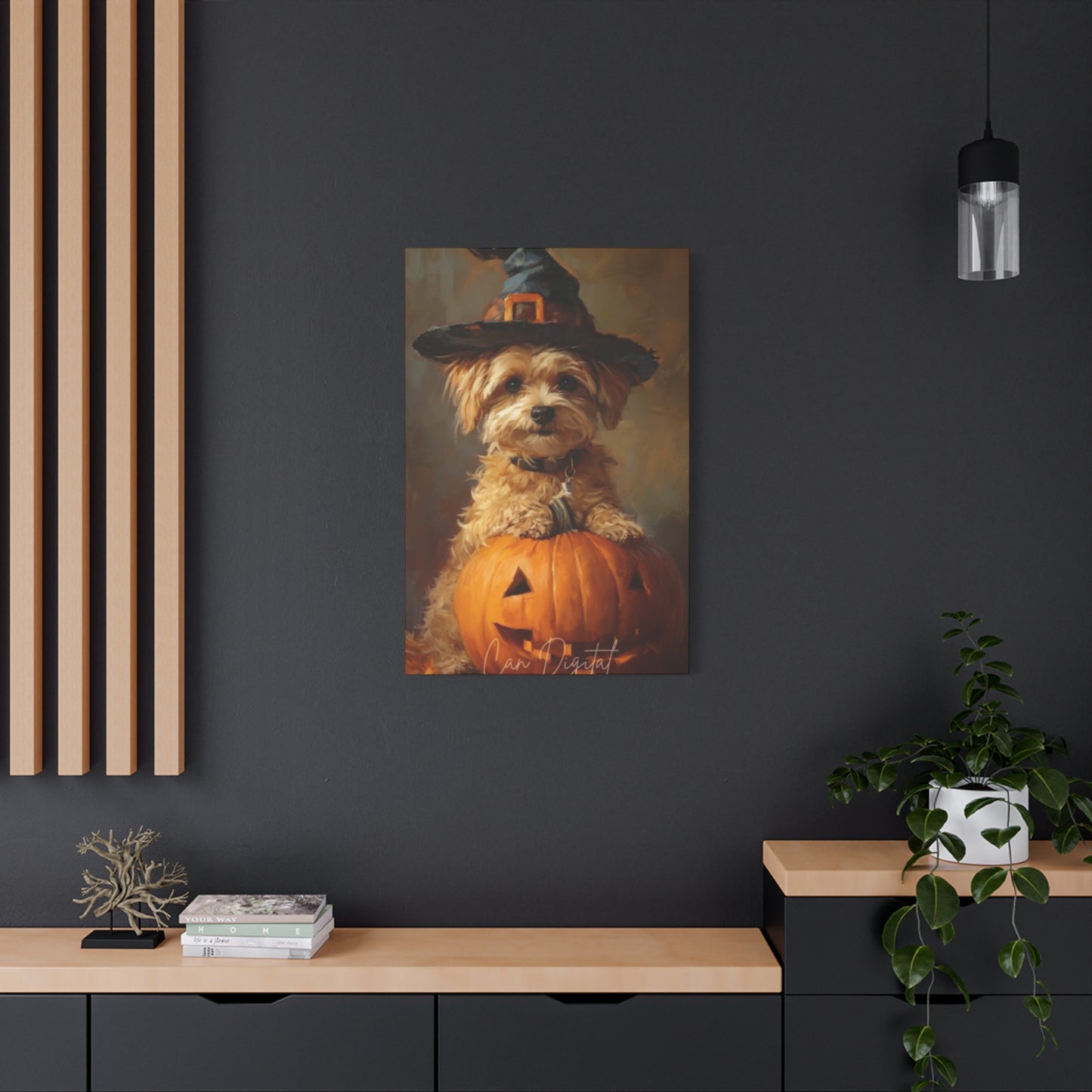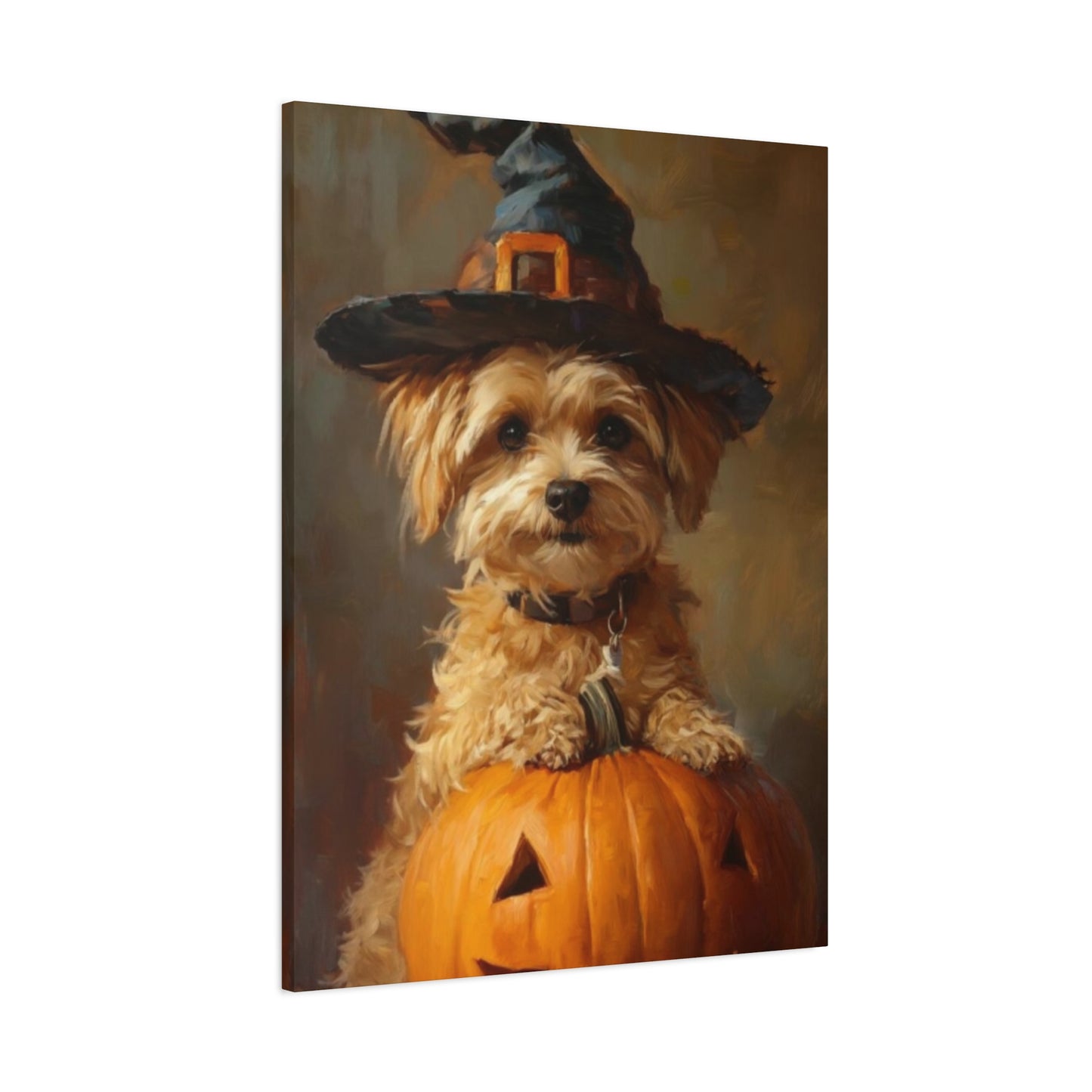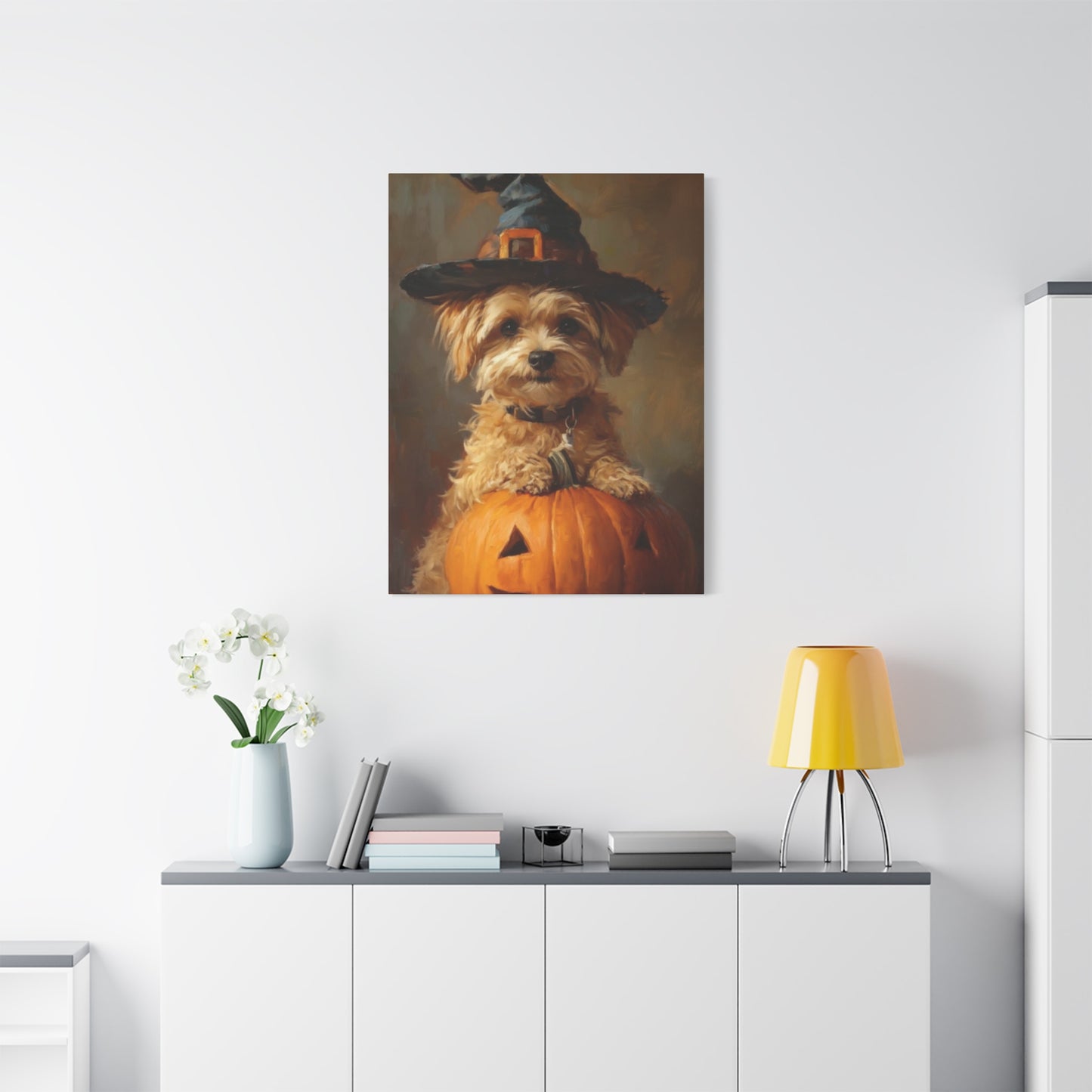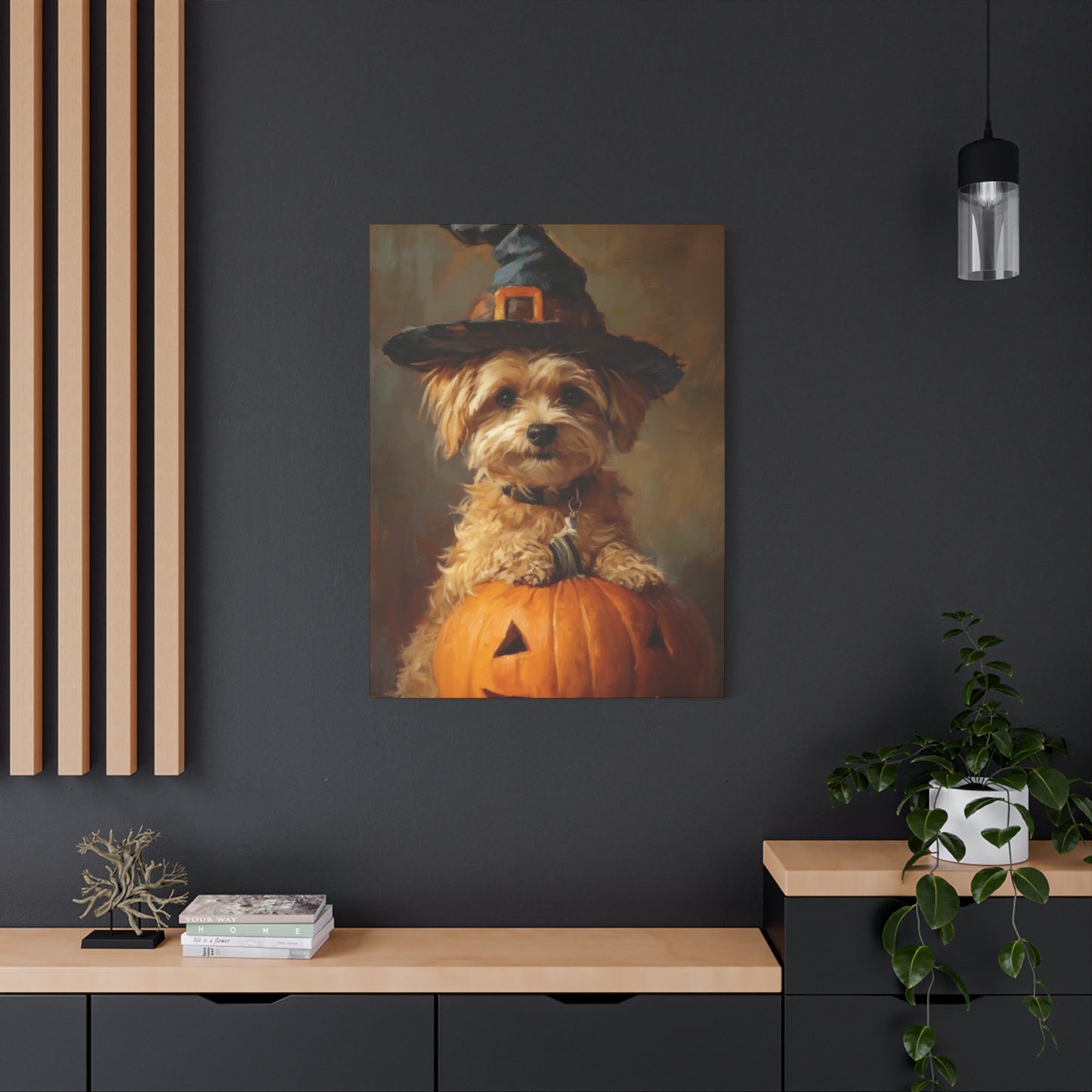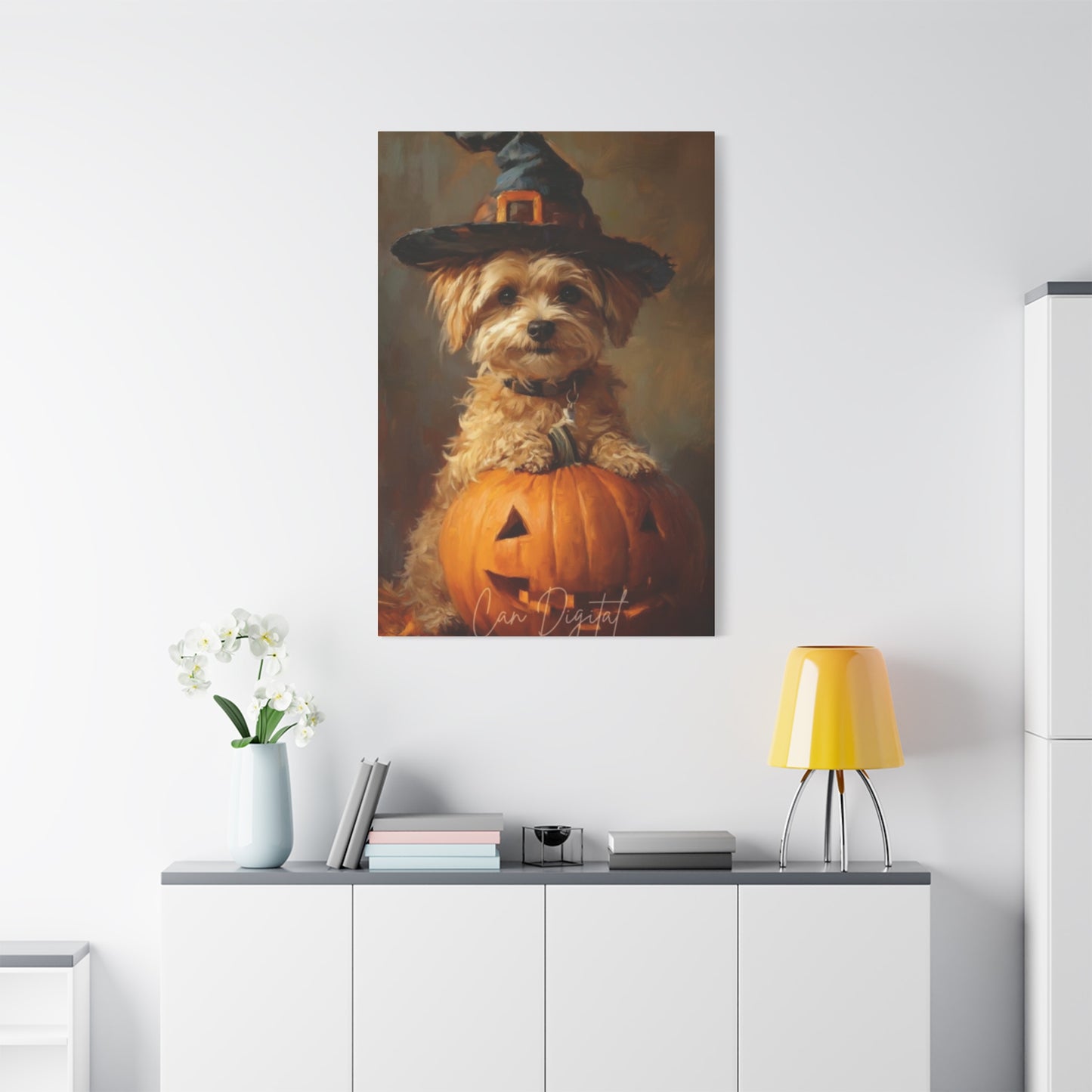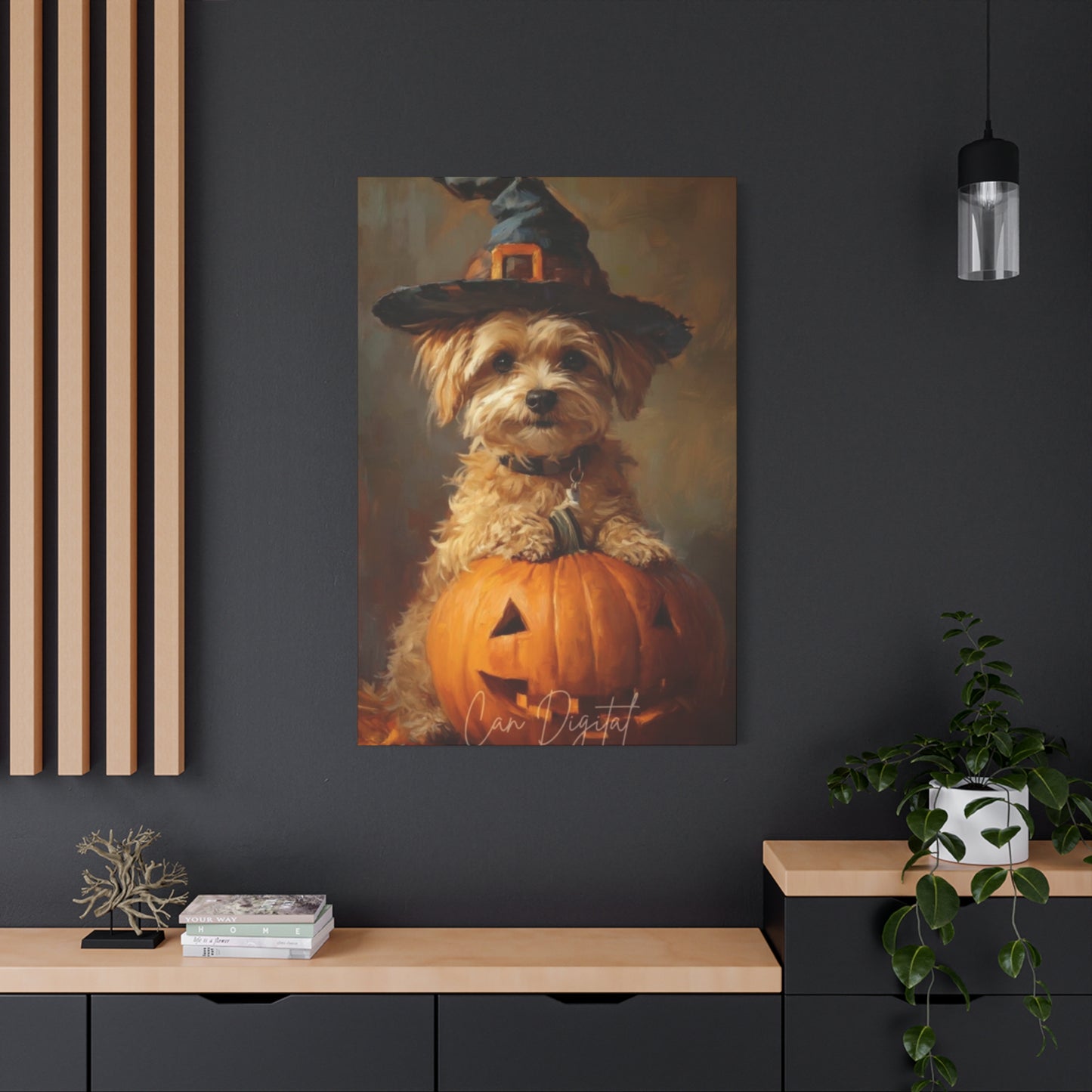Halloween Dog Wall Art: Spooky Canine Decorations for Every Pet Enthusiast
Halloween brings out the creative spirit in pet lovers everywhere, and what better way to celebrate than with charming canine-themed decorations that capture both the spooky essence of the season and the beloved nature of our four-legged companions? This comprehensive exploration delves into the fascinating world of Halloween dog wall art, examining everything from adorable costume portrayals to spine-tingling supernatural scenes featuring our favorite furry friends.
Adorable Halloween Canines in Artistic Expression
The realm of cute Halloween dogs in art represents a delightful fusion of seasonal festivities and pet appreciation. Artists worldwide have embraced the challenge of depicting canines in various Halloween scenarios, creating pieces that warm hearts while maintaining the playful spirit of the holiday. These artistic interpretations often showcase dogs dressed in miniature costumes, from tiny witches' hats to elaborate superhero outfits, capturing moments of pure joy and innocence.
Contemporary artists have developed unique techniques for portraying canines in Halloween settings, utilizing watercolors to create soft, dreamy representations of puppies surrounded by autumn leaves and jack-o'-lanterns. Oil paintings offer rich, textured depictions of dogs lounging among Halloween decorations, while digital art provides opportunities for vibrant, fantastical scenes that might be impossible to achieve through traditional photography.
The appeal of cute Halloween dog art extends beyond mere decoration. These pieces serve as conversation starters, bringing smiles to visitors and family members alike. Many collectors specifically seek out artwork featuring their favorite breeds dressed for Halloween, creating personalized galleries that reflect both their love for dogs and their enthusiasm for seasonal celebrations.
Artists often incorporate elements of storytelling into their Halloween dog portraits, creating narratives that viewers can follow and enjoy. A painting might depict a Golden Retriever leading a pack of costumed puppies on a trick-or-treat adventure, or a Beagle discovering a hidden cache of Halloween treats in a mysterious garden setting.
The technical aspects of creating cute Halloween dog art require careful attention to both anatomical accuracy and seasonal symbolism. Artists must balance the natural characteristics of different dog breeds with the whimsical elements of Halloween costumes and decorations. This often involves studying canine anatomy, understanding how different fabrics drape on various body types, and mastering the interplay between natural and artificial lighting in Halloween scenes.
Eerie Canine Portraits with Halloween Themes
Spooky dog portraits represent a more mysterious and atmospheric approach to Halloween-themed canine art. These pieces often feature dogs in shadowy settings, surrounded by gothic elements that create an air of supernatural intrigue while maintaining the inherent charm of our beloved pets. The artistic challenge lies in balancing the spooky atmosphere with the naturally appealing nature of dogs, creating pieces that are intriguing rather than frightening.
Artists working in this genre often employ dramatic lighting techniques, using strong contrasts between light and shadow to create mood and atmosphere. A portrait might feature a German Shepherd silhouetted against a full moon, or a Border Collie peering through fog-shrouded cemetery gates. These techniques require mastery of chiaroscuro principles and an understanding of how different lighting conditions affect canine features.
The color palettes used in spooky dog portraits tend toward deeper, more mysterious tones. Rich purples, deep oranges, and shadowy blacks dominate these compositions, creating visual harmony with traditional Halloween color schemes. Artists might incorporate subtle hints of supernatural elements, such as glowing eyes or mystical auras, while ensuring that the dog remains the central focus of the composition.
Contemporary digital artists have pushed the boundaries of spooky dog portraiture by incorporating elements of fantasy and horror genres. These modern interpretations might feature dogs as guardians of haunted mansions, companions to friendly ghosts, or mystical creatures with supernatural abilities. The key to successful spooky dog art lies in maintaining the essential goodness and loyalty associated with dogs while adding elements of mystery and intrigue.
The psychological appeal of spooky dog portraits stems from the inherent contradiction between our perception of dogs as comforting, loyal companions and the mysterious, potentially threatening atmosphere of Halloween. This juxtaposition creates visual tension that makes these pieces particularly compelling and memorable.
Costumed Canines in Halloween Celebrations
Dogs in Halloween costumes represent one of the most popular and endearing aspects of seasonal pet art. These depictions capture the humor and joy of dressing up our furry friends, creating lasting memories of Halloween celebrations and pet participation in family traditions. Artists have found endless inspiration in the variety of costumes available for dogs, from simple bandanas to elaborate full-body outfits that transform pets into entirely different characters.
The artistic representation of costumed dogs requires careful attention to proportion and movement. A small Chihuahua dressed as a dinosaur presents different artistic challenges than a Great Dane wearing a superhero cape. Artists must consider how costumes affect natural canine posture and movement, ensuring that their depictions remain believable while capturing the whimsical nature of the costume itself.
Watercolor techniques are particularly effective for costume portrayals, allowing artists to capture the flowing nature of fabric and the soft textures of fur simultaneously. The transparency inherent in watercolor painting can suggest the layering of costume elements over natural canine features, creating depth and realism in the final composition.
Digital art has opened new possibilities for depicting costumed dogs, allowing artists to experiment with impossible scenarios and fantastical transformations. A digital painting might show a pack of dogs dressed as famous movie characters embarking on Halloween adventures, or a single pet transformed into a mythical creature through the magic of costume and artistic interpretation.
The cultural significance of costumed dog art reflects broader trends in pet humanization and family inclusion. These artworks document how pets have become integral members of family celebrations, participating in traditions that were once exclusively human. The popularity of such art pieces demonstrates the emotional connection between pet owners and their animals, as well as the desire to memorialize special moments shared during holiday celebrations.
Feline and Canine Companions in Halloween Art
Black cats and dogs in Halloween art create compelling compositions that celebrate the traditional associations between these animals and the supernatural realm. While black cats have long been linked with Halloween mythology, the inclusion of dogs in these scenes adds layers of narrative complexity and visual interest. Artists often portray these unlikely partnerships as friends rather than adversaries, challenging traditional superstitions while creating heartwarming seasonal imagery.
The artistic challenge of depicting both species together requires understanding the unique characteristics and body language of each animal. Cats and dogs have different proportions, movement patterns, and behavioral expressions that must be accurately represented to create believable interactions. Successful compositions often show these animals engaged in shared activities, such as exploring a haunted house together or watching Halloween trick-or-treaters from a window.
Color theory plays a crucial role in black cat and dog compositions. Artists must carefully balance the deep blacks of cat fur with the varied tones found in different dog breeds, ensuring that neither animal is lost in shadow or overwhelmed by contrast. Strategic use of highlighting and reflected light helps define forms and create visual separation between the two species.
Contemporary artists have embraced the symbolic potential of cat-dog partnerships in Halloween art, using these compositions to explore themes of friendship, cooperation, and the breaking down of traditional barriers. A painting might show a black cat and a golden retriever sharing a pile of autumn leaves, or working together to solve a Halloween mystery.
The emotional appeal of these mixed-species artworks lies in their reflection of real-world pet dynamics. Many households include both cats and dogs, and Halloween art featuring both species resonates with viewers who share their homes with multiple types of pets. These pieces validate the complex relationships that exist between different species and celebrate the harmony that can exist in multi-pet households.
Halloween Canine Decorating Strategies
How to decorate with Halloween dog art requires understanding both aesthetic principles and the emotional impact of canine imagery. The placement and selection of dog-themed Halloween artwork can transform any room into a festive celebration that honors both the holiday spirit and the special place dogs hold in our hearts. Successful decorating schemes consider factors such as room size, lighting conditions, existing color schemes, and the intended emotional atmosphere.
The strategic placement of Halloween dog art can create focal points that draw attention and start conversations. Large-scale pieces work well as centerpieces above fireplaces or sofas, while smaller artworks can be grouped to create gallery walls that tell cohesive stories. The key lies in balancing the seasonal nature of Halloween decorations with pieces that remain appealing throughout the autumn season.
Color coordination plays a vital role in successful Halloween dog art displays. Traditional Halloween colors of orange and black can be complemented by the natural tones found in dog fur, creating harmonious compositions that feel both festive and sophisticated. Browns, golds, and cream colors often found in popular dog breeds blend beautifully with autumn decoration schemes.
Lighting considerations are particularly important when displaying Halloween dog art. Dramatic lighting can enhance the mysterious elements of spooky dog portraits, while softer illumination might be more appropriate for cute, costume-based pieces. The use of colored lights or candles can create atmospheric effects that change the appearance and mood of artworks throughout the evening.
The psychological impact of Halloween dog art in home decoration extends beyond mere visual appeal. These pieces create emotional connections that make visitors feel welcome and comfortable, even in settings designed to be spooky or mysterious. The presence of familiar, beloved dog imagery can soften the potentially frightening aspects of Halloween decoration, making celebrations more inclusive for children and adults who might be sensitive to traditional horror themes.
Seasonal rotation strategies allow homeowners to maximize their investment in Halloween dog art by integrating these pieces with other seasonal decorations throughout the year. Many Halloween dog artworks transition beautifully into general autumn displays, while others can be stored and brought out annually to create anticipated seasonal traditions.
Legendary Halloween Canine Illustrations
Famous Halloween dog illustrations have shaped our cultural understanding of how dogs fit into seasonal celebrations and supernatural folklore. Throughout art history, illustrators have created iconic images that continue to influence contemporary artists and decoration choices. These landmark works demonstrate the evolution of both artistic techniques and cultural attitudes toward pets in Halloween contexts.
Early Halloween dog illustrations often appeared in children's books and greeting cards, establishing visual conventions that persist today. These historical works typically featured dogs as helpful companions to witches, friendly spirits, or brave protectors of children during Halloween adventures. The artistic style of these early illustrations emphasized clear lines, bold colors, and easily readable emotional expressions that could communicate effectively with young audiences.
The development of printing technology allowed for wider distribution of Halloween dog illustrations, making these images part of shared cultural experiences. Families would recognize similar artistic motifs across different products, from party decorations to book illustrations, creating a sense of visual familiarity and tradition associated with Halloween celebrations.
Contemporary famous Halloween dog illustrations often pay homage to these historical precedents while incorporating modern artistic techniques and cultural references. Digital artists might create illustrations that reference classic horror movies while featuring dogs as main characters, or develop series that reimagine traditional Halloween stories from a canine perspective.
The influence of famous Halloween dog illustrations extends into commercial art and product design. Greeting card companies, decoration manufacturers, and publishing houses continue to commission artists to create new interpretations of classic themes, ensuring that the tradition of Halloween dog imagery remains vibrant and current.
The study of famous Halloween dog illustrations provides insight into changing social attitudes toward pets and seasonal celebrations. Early works might depict dogs as working animals or background characters, while contemporary illustrations often position dogs as central figures with complex personalities and emotional lives that mirror human experiences.
Canine and Pumpkin Artistic Combinations
Dog and pumpkin wall art represents a particularly charming subset of Halloween canine imagery that celebrates both the harvest season and pet appreciation. Pumpkins serve as versatile artistic elements that can frame, complement, or interact with dog subjects in various creative ways. The natural orange color of pumpkins creates beautiful color harmonies with many dog coat colors, from golden retrievers to Irish setters.
Artists working with dog and pumpkin themes often explore the textural contrasts between smooth pumpkin surfaces and varied fur textures. Watercolor techniques can effectively capture the translucent quality of pumpkin flesh while maintaining the opacity and richness of canine fur. Oil painting allows for detailed exploration of surface textures, creating almost tactile representations of both elements.
The compositional possibilities for dog and pumpkin art are nearly limitless. A piece might feature a small dog sleeping contentedly inside a large hollow pumpkin, or a group of puppies playing among a pumpkin patch. Some artists create whimsical scenes where dogs appear to be carved into pumpkin faces, or where jack-o'-lanterns take on dog-like characteristics.
The seasonal significance of pumpkin imagery adds temporal context to dog art, clearly identifying these pieces as autumn or Halloween-themed without requiring additional seasonal elements. This makes dog and pumpkin art particularly valuable for decorators who want to create seasonal displays that remain tasteful and elegant rather than overtly spooky or commercial.
Contemporary digital artists have pushed the boundaries of dog and pumpkin art by creating surreal or fantastical interpretations. These might include scenes where pumpkins and dogs share magical properties, or where the boundary between the two subjects becomes deliberately blurred through artistic technique and imagination.
The commercial appeal of dog and pumpkin art reflects its broad accessibility and appeal. These images work well in family-friendly contexts, appeal to both dog lovers and general audiences, and integrate easily with existing autumn decoration schemes. The combination creates emotional associations with harvest festivals, family traditions, and seasonal abundance.
Silhouetted Halloween Canines
Halloween dog silhouettes offer artists and decorators opportunities to create dramatic, atmospheric pieces that emphasize form and composition over surface detail. The silhouette technique reduces dogs to their essential shapes, creating images that are both mysterious and immediately recognizable. This artistic approach works particularly well for Halloween themes, as silhouettes naturally evoke the shadowy, mysterious atmosphere associated with the holiday.
The creation of effective dog silhouettes requires deep understanding of canine anatomy and breed characteristics. Artists must identify the unique features that make different breeds immediately recognizable even when reduced to simple shapes. A German Shepherd silhouette, for example, relies on distinctive ear positioning and body proportions, while a Dachshund silhouette emphasizes the breed's elongated body shape and short legs.
Lighting plays a crucial role in silhouette compositions, whether created through traditional photography, painting, or digital art. The contrast between the dark dog shape and illuminated background creates visual drama that can be enhanced through careful attention to edge quality and background composition. Some artists use atmospheric effects like fog or moonlight to create additional layers of visual interest.
Color choices in Halloween dog silhouettes typically emphasize the contrast between dark figures and lighter backgrounds, but contemporary artists have experimented with reversed approaches, colored silhouettes, and gradient effects that maintain the essential silhouette concept while adding visual complexity.
The symbolic power of dog silhouettes in Halloween contexts draws from both the mysterious nature of shadowy shapes and the comforting familiarity of dog forms. This combination creates images that are intriguing without being threatening, mysterious without being frightening. The technique allows viewers to project their own emotional interpretations onto the simplified forms.
Digital art has expanded the possibilities for dog silhouette creation, allowing artists to experiment with impossible lighting scenarios, multiple exposure effects, and fantastical background compositions. These techniques can create striking wall art pieces that serve as focal points in Halloween decoration schemes.
Witchy Canine Artistic Representations
Dogs with witch hats in art combine the traditional Halloween imagery of witchcraft with the beloved appeal of canine companions. This artistic theme explores the playful side of Halloween by placing dogs in magical contexts, often creating humorous or endearing scenes that celebrate both pet appreciation and seasonal traditions. The juxtaposition of serious witchcraft symbolism with the inherently innocent nature of dogs creates delightful visual contradictions that appeal to viewers of all ages.
The artistic challenge of depicting dogs in witch hats involves balancing the proportions and positioning of costume elements with natural canine anatomy. Different dog breeds require different approaches to hat placement and sizing, and artists must consider how these accessories affect the natural lines and expressions of their subjects. A successful witch hat dog portrait maintains both the dignity of the animal and the whimsical nature of the costume.
Color theory plays an important role in witch-themed dog art, as traditional witchcraft colors of black, purple, and deep green must be balanced with the natural colors of canine subjects. Artists often use these dark tones as background elements or costume details, allowing the natural warmth of dog fur colors to provide visual balance and emotional appeal.
Contemporary interpretations of dogs with witch hats often include additional magical elements such as spell books, cauldrons, broomsticks, or mystical backgrounds. These compositional elements help create narrative contexts that suggest stories about the dog's magical adventures or supernatural abilities. The key to successful magical dog art lies in maintaining the essential goodness and loyalty associated with dogs while adding elements of fantasy and wonder.
Digital art techniques have opened new possibilities for magical dog portraits, allowing artists to add glowing effects, floating objects, and impossible architectural backgrounds that enhance the supernatural themes. These technical capabilities enable the creation of truly fantastical scenes that would be impossible to achieve through traditional photography or painting alone.
The cultural appeal of witch-themed dog art reflects broader trends in pop culture that present witchcraft as positive, empowering, and fun rather than threatening or evil. Modern interpretations often show dogs as willing participants in magical activities, suggesting partnerships between pets and their mystically-inclined owners.
Pet-Themed Halloween Home Decoration
Halloween pets in wall decor represent a growing trend that celebrates the inclusion of animals in seasonal home decoration schemes. This approach recognizes that pets are family members who participate in holiday celebrations and deserve artistic representation in seasonal displays. The challenge for artists and decorators lies in creating pieces that effectively balance Halloween themes with pet appreciation in ways that enhance rather than overwhelm existing decoration schemes.
The versatility of pet-themed Halloween wall decor allows for various artistic approaches, from realistic portraits of specific animals in Halloween settings to stylized representations that capture the spirit of pet participation in seasonal celebrations. Some pieces focus on documenting actual Halloween moments, such as pets in costumes or animals interacting with decoration displays, while others create fantastical scenarios that imagine pets as supernatural beings or magical companions.
Scale considerations are particularly important when incorporating pet-themed Halloween art into existing decoration schemes. Large statement pieces can serve as focal points that anchor entire room displays, while smaller works can be grouped to create gallery walls that tell cohesive seasonal stories. The key lies in understanding how different sized artworks interact with furniture, lighting, and other decorative elements.
Color coordination strategies for Halloween pet wall decor must consider both traditional Halloween palettes and the natural colors associated with different animal species. Successful schemes often use neutral tones as bridging elements, allowing seasonal colors to complement rather than compete with pet imagery. The goal is to create harmonious displays that feel both festive and sophisticated.
The emotional impact of pet-themed Halloween decor extends beyond mere seasonal decoration. These pieces create connections between family traditions, beloved animals, and shared celebrations that can evoke powerful memories and associations. For many families, these artworks become treasured reminders of special moments shared with pets during Halloween celebrations.
Practical considerations for Halloween pet wall decor include durability, safety, and seasonal storage requirements. Pieces intended for annual use should be constructed with materials that can withstand repeated handling and storage, while maintaining their visual appeal over many years of use.
Creating Halloween Atmosphere with Canine Art
Using dog art for Halloween vibes requires strategic thinking about how canine imagery can contribute to seasonal atmosphere while maintaining its inherent appeal. The challenge lies in selecting and presenting dog-themed artworks that enhance rather than diminish the mysterious, exciting qualities associated with Halloween celebrations. Successful atmospheric design considers factors such as color harmony, compositional balance, lighting effects, and emotional resonance.
The atmospheric potential of dog art in Halloween contexts stems from the versatility of canine subjects and their ability to adapt to various emotional and visual contexts. A single dog portrait might convey warmth and comfort in normal lighting conditions while taking on mysterious or dramatic qualities under different illumination. This adaptability makes dog art particularly valuable for creating layered, complex atmospheric effects.
Color temperature adjustments can dramatically affect the mood and atmosphere of dog art displays. Warm lighting tends to emphasize the comforting, familiar aspects of canine subjects, while cooler lighting can enhance mysterious or supernatural elements. The strategic use of colored lighting, such as purple or orange bulbs, can transform ordinary dog portraits into integral components of Halloween atmosphere.
Compositional groupings of multiple dog artworks can create narrative sequences that contribute to overall atmospheric effects. A series of pieces might tell the story of a dog's Halloween adventure, or document the transformation of a pet from ordinary companion to supernatural being. These sequential displays engage viewers' imaginations and encourage longer contemplation of the artwork.
The psychological effects of using dog art in Halloween displays relate to the comfort and security that canine imagery provides. Even in contexts designed to be spooky or mysterious, the presence of familiar, beloved dog imagery can make celebrations more accessible and enjoyable for viewers who might otherwise find traditional Halloween imagery overwhelming or frightening.
Contemporary display techniques, including digital frames and projection systems, offer new possibilities for creating dynamic Halloween dog art displays that change throughout the evening or respond to environmental conditions. These technologies allow for sophisticated atmospheric effects that would be impossible with traditional static artworks.
Lighthearted Halloween Canine Paintings
Playful Halloween dog paintings celebrate the joy and humor inherent in combining beloved pets with seasonal traditions. These artworks emphasize entertainment value and emotional warmth, creating pieces that make viewers smile while maintaining appropriate seasonal themes. The artistic challenge lies in balancing playful elements with sufficient Halloween imagery to clearly identify the seasonal context.
The techniques used in playful dog paintings often emphasize movement, expression, and interaction between subjects and seasonal elements. Artists might depict dogs caught in the act of playing with Halloween decorations, investigating trick-or-treat bags, or participating in costume parades. The key to successful playful dog art lies in capturing moments of genuine canine behavior that viewers can recognize and relate to from their own experiences with pets.
Color choices in playful Halloween dog paintings tend toward brighter, more saturated palettes that emphasize energy and excitement rather than mystery or atmosphere. While traditional Halloween colors remain important, they are often balanced with warmer tones that reflect the natural joy and enthusiasm associated with canine subjects.
Compositional techniques for playful dog paintings often include multiple focal points and dynamic movement patterns that guide viewers' eyes around the canvas. These pieces might show dogs in mid-leap, chasing autumn leaves, or engaged in group activities with other animals or human figures. The goal is to create visual energy that matches the emotional content of the subject matter.
The market appeal of playful Halloween dog paintings extends beyond seasonal decoration to year-round display potential. Many of these pieces work well as general autumn artworks or as permanent additions to pet-themed home decoration schemes. This versatility makes them valuable investments for art collectors and home decorators.
Contemporary digital techniques have expanded the possibilities for creating playful dog paintings through the addition of special effects, impossible scenarios, and fantastical elements that enhance the whimsical nature of these works. Digital artists can create scenes where dogs appear to fly, interact with cartoon characters, or participate in magical adventures that would be impossible to capture through traditional media.
Balancing Spooky and Adorable Elements
Scary vs. cute Halloween dogs represent an interesting artistic dichotomy that challenges creators to find appropriate balances between potentially frightening seasonal elements and the inherently appealing nature of canine subjects. This balance varies depending on intended audience, artistic purpose, and cultural context, but successful pieces generally maintain the essential goodness and loyalty associated with dogs while incorporating enough Halloween atmosphere to clearly identify the seasonal theme.
The artistic techniques used to create scary Halloween dog imagery must be carefully calibrated to avoid creating truly frightening or disturbing images. Even in spooky contexts, successful scary dog art typically maintains elements that remind viewers of the fundamental trustworthiness and companionship that characterize human-dog relationships. This might involve using dramatic lighting while maintaining kind expressions, or incorporating supernatural elements while preserving recognizable canine behaviors.
Cute Halloween dog art, by contrast, emphasizes the adorable and endearing aspects of dogs while incorporating seasonal elements in ways that enhance rather than compete with canine appeal. These pieces often feature dogs in costume, interacting playfully with Halloween decorations, or participating in family celebrations. The challenge lies in avoiding overly saccharine imagery while maintaining sufficient seasonal relevance.
The demographic considerations for scary versus cute dog art influence both artistic creation and marketing strategies. Cute dog art generally appeals to broader audiences, including families with young children, while scary dog art might be more appropriate for adult audiences or specific themed contexts. Understanding these audience preferences helps artists make appropriate creative decisions.
Contemporary market trends suggest increasing preference for Halloween dog art that balances scary and cute elements rather than emphasizing one extreme. Modern consumers often seek decorative pieces that can appeal to multiple age groups and remain appropriate for various social contexts. This trend challenges artists to develop sophisticated approaches that satisfy complex audience requirements.
The seasonal longevity of scary versus cute Halloween dog art varies significantly. Cute pieces often transition well into general autumn displays or year-round pet-themed decoration, while scary pieces might have more limited seasonal appeal. These practical considerations affect both artistic creation and consumer purchasing decisions.
Halloween Color Schemes in Canine Art
Color themes in Halloween dog art play crucial roles in establishing seasonal context, creating emotional responses, and achieving visual harmony within broader decoration schemes. The traditional Halloween palette of orange and black provides a starting point, but successful dog art often incorporates additional colors that complement natural canine fur tones while maintaining appropriate seasonal associations.
The psychology of color in Halloween contexts influences how viewers respond to dog art emotionally and aesthetically. Orange colors suggest warmth, energy, and harvest associations that complement the natural golden and brown tones found in many popular dog breeds. Black provides dramatic contrast and mystery while allowing the warmer tones to appear more luminous and appealing.
Purple has become increasingly popular in contemporary Halloween color schemes, offering alternatives to traditional palettes while maintaining supernatural associations. When combined with dog subjects, purple can create sophisticated, elegant effects that elevate Halloween dog art beyond simple seasonal decoration. The key lies in balancing purple's mystical qualities with the earthy, natural associations of canine subjects.
The technical challenges of working with Halloween color schemes in dog art include maintaining realistic representation of canine features while incorporating dramatic seasonal colors. Artists must consider how colored lighting affects the appearance of fur textures, how background colors influence the perception of subject matter, and how overall color harmony contributes to successful composition.
Regional and cultural variations in Halloween color preferences affect both artistic creation and market demand for dog art. While orange and black remain universally recognizable as Halloween colors, some markets prefer more sophisticated palettes that incorporate metallics, deep jewel tones, or muted earth colors. Understanding these preferences helps artists create works that appeal to specific target audiences.
The seasonal transition potential of different color schemes affects the long-term value and appeal of Halloween dog art. Pieces that incorporate colors associated with general autumn themes (browns, golds, deep reds) often remain appropriate for display throughout the fall season, while those emphasizing specifically Halloween colors might have more limited seasonal relevance.
Creating Personal Halloween Dog Art
DIY Halloween dog drawings offer pet owners opportunities to create personalized artworks that celebrate their specific animals while participating in seasonal traditions. The process of creating original dog art provides both creative satisfaction and meaningful connections with beloved pets. Success in DIY dog art depends on understanding basic artistic principles while maintaining realistic expectations about skill development and final results.
The fundamental skills required for DIY dog art include basic drawing techniques, understanding of canine anatomy and proportions, and familiarity with materials and tools. Beginning artists often benefit from working with reference photographs and following structured instructional approaches that break complex subjects into manageable components. The goal is to develop confidence and enjoyment in the creative process rather than achieving professional-level results immediately.
Material choices for DIY Halloween dog art range from simple pencil and paper combinations to more sophisticated media such as watercolors, acrylics, or digital drawing tools. Each medium offers different advantages and challenges, and beginning artists often benefit from experimenting with various options to discover personal preferences and natural aptitudes.
The creative process for DIY Halloween dog art typically involves several stages, including planning and composition, initial sketching, development of details, and final refinement. Understanding this process helps artists approach their projects systematically while allowing for creative discovery and adaptation along the way.
Reference gathering is a crucial component of successful DIY dog art, whether working from personal photographs, observation of living animals, or study of existing artworks. The quality and appropriateness of reference material significantly affects final results, making this preparation phase particularly important for beginning artists.
The emotional rewards of creating DIY Halloween dog art extend beyond the finished artwork to include the creative process itself, the development of artistic skills, and the deepened appreciation for beloved pets that comes from careful observation and representation. These intangible benefits often prove more valuable than the physical artworks themselves.
Building Halloween Canine Art Collections
Collecting Halloween dog wall art represents a specialized area of art appreciation that combines seasonal decoration needs with pet enthusiasm and aesthetic appreciation. Successful collectors develop focused strategies that consider factors such as artistic quality, seasonal relevance, display requirements, and long-term value potential. The growing popularity of pet-themed art has created expanded market opportunities for both collectors and artists.
The development of collecting criteria helps focus purchasing decisions and build coherent collections over time. Some collectors emphasize specific artistic media, such as original paintings or limited-edition prints, while others focus on particular themes, such as specific dog breeds or seasonal activities. Understanding personal preferences and decoration needs helps collectors make satisfying acquisition decisions.
Market research skills are essential for successful Halloween dog art collecting, as this specialized niche requires understanding of both general art market trends and specific pet art dynamics. Factors such as artist reputation, edition sizes, condition assessment, and authentication requirements all influence both acquisition decisions and long-term value potential.
Display and storage considerations become increasingly important as collections grow. Halloween dog art requires appropriate storage solutions for seasonal pieces, climate-controlled environments for valuable works, and flexible display systems that accommodate changing decoration needs. Planning for these practical requirements prevents damage and maintains collection value over time.
The social aspects of collecting Halloween dog art include connections with other collectors, relationships with artists and dealers, and participation in pet-themed art communities. These networks provide valuable information about market trends, acquisition opportunities, and appreciation activities that enhance the collecting experience.
Investment potential in Halloween dog art varies significantly depending on factors such as artist reputation, rarity, condition, and market demand. While some pieces may appreciate significantly over time, collectors should primarily focus on personal enjoyment and aesthetic satisfaction rather than expecting guaranteed financial returns.
Gothic Canine Architecture Art
Dogs and haunted houses in art create compelling compositions that combine architectural elements with beloved pet subjects in supernatural contexts. These artworks often explore themes of loyalty, protection, and companionship within mysterious or threatening environments. The artistic challenge lies in balancing the potentially frightening aspects of haunted architecture with the comforting presence of canine subjects.
The architectural elements commonly featured in haunted house dog art include Gothic revival details, Victorian mansions, abandoned farmhouses, and cemetery structures. Artists must understand these architectural styles well enough to represent them convincingly while creating appropriate contexts for canine subjects. The interaction between built environments and animal subjects creates opportunities for narrative development and emotional complexity.
Lighting techniques are particularly important in haunted house dog art, as atmospheric effects help establish mood and guide viewer attention between architectural and animal elements. Artists might use moonlight streaming through broken windows, candlelight flickering in dark interiors, or supernatural glowing effects to create dramatic illumination that enhances both subjects.
The symbolic relationship between dogs and haunted houses draws from various cultural traditions that associate dogs with protection, loyalty, and supernatural sensitivity. In many cultural contexts, dogs are believed to detect paranormal activity or serve as guardians against supernatural threats. These associations provide rich symbolic content for artistic exploration.
Contemporary interpretations of dogs and haunted houses often incorporate elements of fantasy, science fiction, or modern horror genres while maintaining core themes of companionship and protection. Digital artists might create elaborate scenes featuring dogs as supernatural investigators, ghostly companions, or magical protectors of mysterious locations.
The commercial appeal of haunted house dog art spans multiple market segments, including Halloween decoration, gothic art appreciation, architectural art collecting, and pet-themed decoration. This broad appeal makes these artworks particularly valuable for artists seeking to reach diverse audiences while maintaining focused thematic content.
Child-Friendly Halloween Canine Decor
Halloween dog art for kids' rooms requires careful consideration of age-appropriate themes, visual elements, and emotional content. The goal is to create seasonal decoration that maintains Halloween excitement while ensuring comfort, safety, and positive associations for young viewers. Successful children's Halloween dog art emphasizes playful, friendly elements while avoiding potentially frightening imagery.
The artistic techniques used in children's Halloween dog art often emphasize bright colors, clear shapes, and easily readable emotional expressions. Characters should appear friendly and approachable, with facial expressions and body language that suggest playfulness rather than aggression or fear. The overall aesthetic should feel inviting and entertaining rather than mysterious or threatening.
Subject matter selection for children's rooms focuses on scenarios that young viewers can relate to and enjoy. This might include dogs dressed in fun costumes, pets participating in trick-or-treat activities, or animals playing with Halloween decorations. The key is to choose themes that reflect positive childhood experiences with both pets and seasonal celebrations.
Safety considerations for children's Halloween dog art include appropriate hanging systems, durable materials that can withstand handling, and non-toxic construction throughout. Artworks intended for children's rooms should meet relevant safety standards while maintaining visual appeal and seasonal relevance.
The educational potential of Halloween dog art in children's rooms extends beyond mere decoration to include opportunities for learning about different dog breeds, seasonal traditions, and artistic techniques. Interactive elements or accompanying text can enhance the educational value while maintaining entertainment focus.
Developmental considerations for different age groups influence both artistic creation and selection processes. Artworks appropriate for toddlers might emphasize simple shapes and bright colors, while pieces for older children can incorporate more complex narratives and sophisticated artistic techniques. Understanding these developmental differences helps create more effective and appropriate room decoration.
Monochromatic Halloween Canine Art
Black and orange dog art represents the most traditional approach to Halloween color schemes in canine-themed artwork. This classic combination creates immediate seasonal recognition while providing opportunities for sophisticated artistic exploration within a limited palette. The challenge for artists lies in creating visual interest and emotional appeal using only these two colors plus their various combinations and values.
The technical aspects of working with black and orange palettes require understanding of color temperature, value relationships, and visual contrast principles. Orange's warm, energetic qualities must be balanced against black's dramatic, mysterious characteristics to create compositions that feel both seasonally appropriate and visually satisfying. Artists often incorporate various shades, tints, and tones of these base colors to achieve greater complexity.
The symbolic associations of black and orange in Halloween contexts influence how viewers interpret dog art created with these colors. Black suggests mystery, elegance, and supernatural elements, while orange conveys warmth, energy, and harvest associations. When applied to canine subjects, these colors can enhance different aspects of dog personality and behavior representation.
Compositional strategies for black and orange dog art often emphasize contrast and drama through strategic placement of light and dark elements. A composition might feature a golden-orange dog silhouetted against a black background, or use alternating patterns of black and orange to create dynamic visual rhythms throughout the piece.
The historical precedents for black and orange Halloween imagery provide context and inspiration for contemporary dog artists. Understanding how these colors have been used traditionally in seasonal decoration and commercial art helps artists make informed creative decisions while developing personal artistic interpretations.
The versatility of black and orange dog art extends beyond Halloween to include applications in autumn decoration, harvest themes, and year-round display contexts where dramatic color combinations are desired. This flexibility makes black and orange pieces particularly valuable for collectors and decorators seeking maximum seasonal utility.
Ghostly Canine Costume Art
Dogs in ghost costumes represent one of the most endearing and recognizable themes in Halloween pet art. The simple white sheet costume creates immediate visual recognition while offering artists opportunities to explore humor, movement, and the contrast between supernatural imagery and beloved pet subjects. The artistic challenge lies in maintaining the recognizable characteristics of canine subjects while incorporating the flowing, ethereal qualities of ghost costumes.
The technical difficulties of depicting dogs in ghost costumes include representing fabric draping convincingly while suggesting the underlying canine form. Artists must understand how lightweight fabrics move and fold around different dog body types, and how eye holes and other openings affect the overall silhouette. Successful ghost costume dog art maintains enough anatomical suggestion to keep the dog recognizable while embracing the simplified, mysterious qualities of the costume.
Conclusion
Halloween dog wall art is a delightful and spirited way to combine the festive excitement of the spooky season with the lovable charm of our four-legged friends. Perfect for pet enthusiasts and Halloween lovers alike, this unique genre of wall décor brings playful, eerie, and often heartwarming scenes featuring dogs dressed up in costumes, surrounded by classic Halloween elements like pumpkins, ghosts, and haunted houses. These pieces add a touch of whimsy and warmth to any space, making them an ideal choice for those who want to celebrate both their love for pets and the magic of Halloween.
What sets Halloween dog wall art apart is its ability to blend fun and festivity with the unmistakable personality of dogs. Whether it’s a mischievous pup in a witch’s hat, a loyal dog guarding a pumpkin patch, or a spooky silhouette of a canine under a full moon, each piece tells a story that resonates with pet lovers. This art style captures the playful spirit of Halloween while celebrating the bond between humans and their furry companions, creating an emotional connection that goes beyond simple decoration.
Incorporating Halloween dog art into your home décor offers versatility and charm. These artworks fit beautifully in living rooms, hallways, kitchens, or even pet-friendly spaces like mudrooms and play areas. They complement a variety of interior styles—from cozy country homes and eclectic apartments to modern spaces with a quirky twist. The seasonal theme also makes them perfect for adding festive cheer during October, while many designs feature colors and compositions that can transition smoothly into year-round pet-themed décor.
Beyond aesthetics, Halloween dog wall art reflects the joyful spirit of pets who bring happiness and companionship into our lives all year round. It reminds us of the fun and creativity that come with dressing up our pets, as well as the warmth and loyalty they offer through every season. These pieces become more than decorations; they become celebrations of friendship, joy, and the playful side of pet ownership.
In conclusion, Halloween dog wall art is a charming fusion of spooky fun and pet-loving warmth. It infuses your home with seasonal spirit while honoring the special place dogs hold in our hearts. Whether for a Halloween party, seasonal refresh, or a year-round canine celebration, these artworks bring character, joy, and a touch of magic to any space.

















